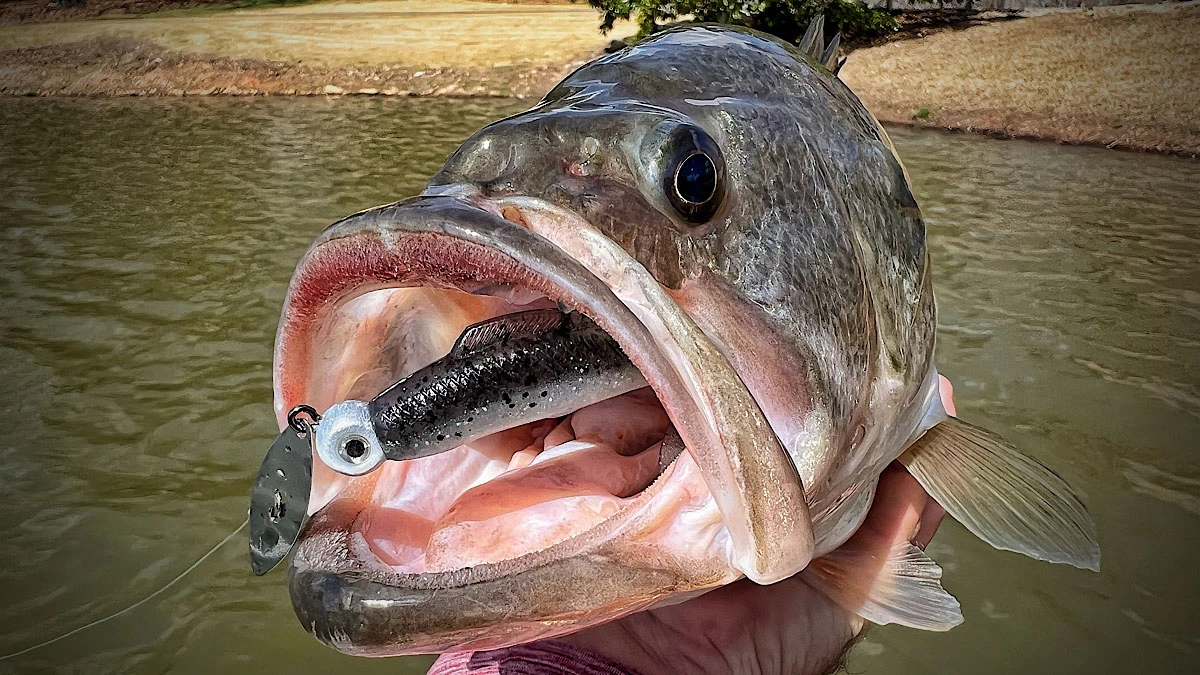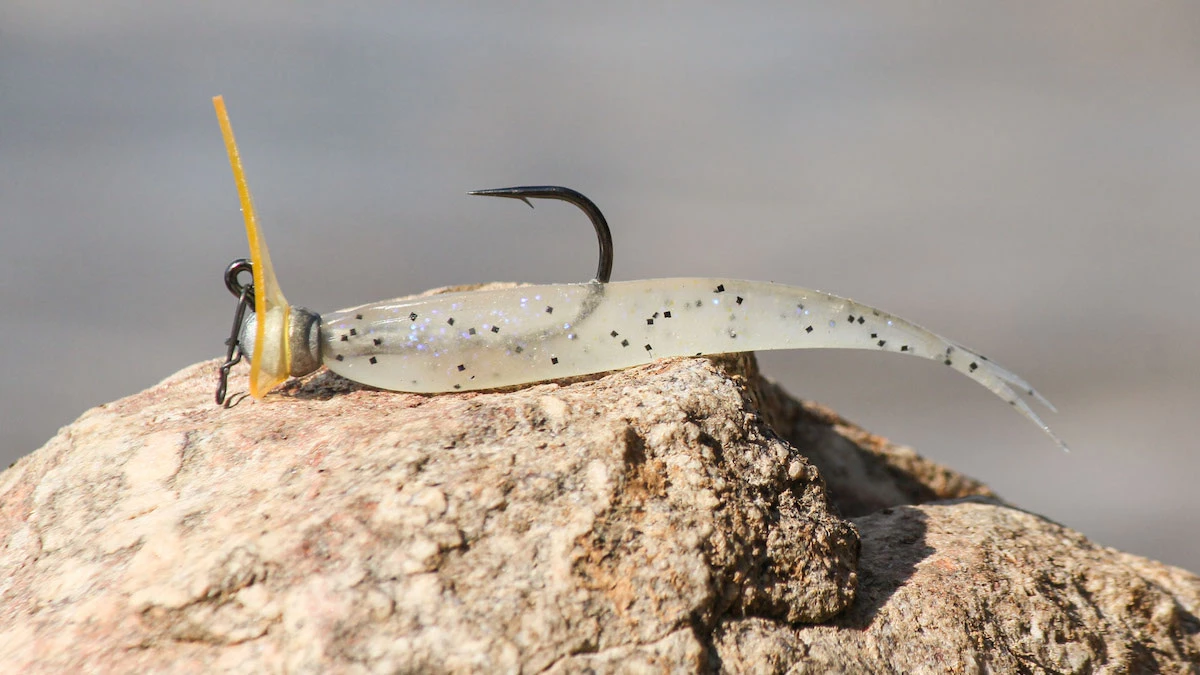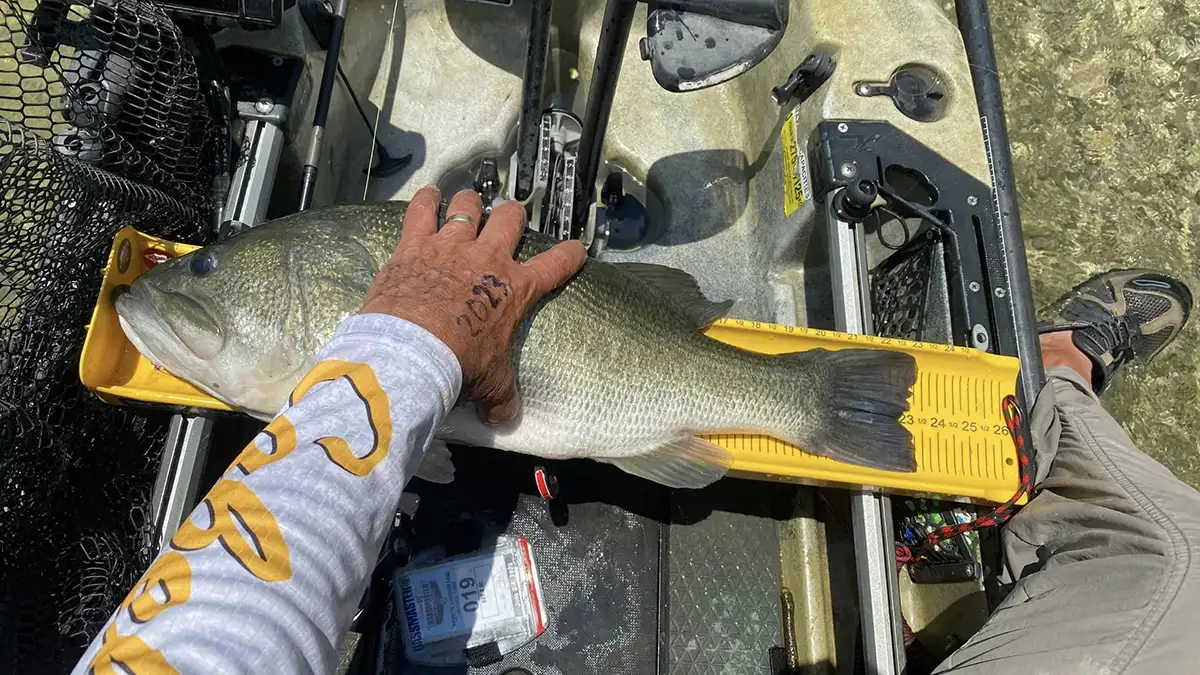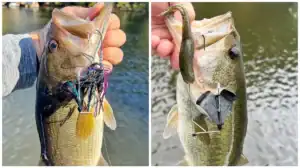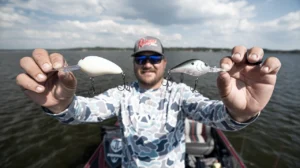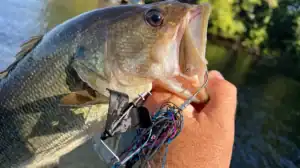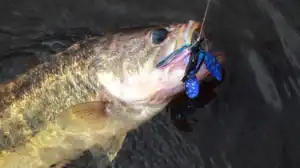Though winter doesn’t officially start until December 21, fall fishing is in the rearview mirror for most of us. The migration of shad and other baitfish shallow reached its climax a few weeks ago. Now the bass have busted up the big schools of bait, the water has cooled significantly and everything is becoming less and less active.
If this isn’t the case for you, it will be soon. The shad and the bass either are or will be super lethargic in the near future. This means it will take a slower, gentler action for a lure to match the hatch well. So we’re going to discuss the ins and outs of three finesse shad imitators to help you catch more bass this winter.
Blade bait
A lipless crankbait is one of the best fall baits of all time. But as fall fades into winter, a lipless bait’s rattle and size can be a little off-putting to bass that are entering into a less aggressive state due to the cold water and their cold-blooded nature. This state is what we are referring to when we say bass are lethargic.
A blade bait offers a similar profile to a lipless crankbait, in a smaller, slimmer size; it’s also a stealthier bait with no sound and a tighter vibration. Most blade baits even have multiple holes along their back so the angler can reposition the line-tie clip to really dial in the vibration of the blade bait to perfectly fit the mood of the fish on any given day.
By moving the clip forward, you can tighten up the action of the bait. If you want a wider wobble and kick, move the clip towards the tail of the bait. Because these baits are metal, even the unpainted ones have a very realistic flash to them. The metal is also heavier than the composite most lipless baits are made of, so the overall size of a particular weight of blade bait can be much smaller than a lipless crankbait of the same weight.
You can fish a blade bait several different ways and you should tailor your approach by determining where in the water column the bass are positioning. If they’re suspended, cast your bait out and let it fall to the desired depth then retrieve it in a horizontal line. Or you can cast your bait out and let it pendulum through the section of the water column where the bass are positioned.
You can also yo-yo this bait or fish it along the bottom, like you would a lipless. Again, determine where the fish are either with you electronics or by trial and error and tailor your retrieve accordingly.
Scrounger
A bait that really doesn’t get enough recognition, the scrounger is a fantastic finesse wintertime presentation. Baits in the scrounger genre essentially have two things in common: a molded jighead on a hook and a rubber-like collar.
When you pair a scrounger head with a shad-style soft plastic, like a Fluke or small swimbait, you create a fantastic finesse shad imitator for cold-water scenarios. The bill causes this combo to rock back and forth, creating a top-to-bottom flash. This flash is what makes a taller-profile bait such a fantastic selection to pair with a scrounger head.
But the soft and slow kick of a little paddle tail swimbait also pairs nicely with a scrounger head, as long as the tail doesn’t overpower the bill. It’s also beneficial if the swimbait has a taller profile, like the Fluke, as opposed to the rounder body-style swimbaits we see a lot of. Considering all of this, the Missile Baits Shockwave is a great illustration of an ideal swimbait to pair with a scrounger head.
Though larger versions of the scrounger work well on ledges in the summer too, in the winter it’s best to go with a light presentation and a small bait. This allows you to match the size of the baitfish well, as well as offer a lighter vibration to appeal to the lethargic bass. So something in the 1/4-ounce range or lighter paired with a swimbait or fluke less than 4 inches in length.
Like the blade bait, a scrounger can be used to target bass throughout a large part of the water column. But the smaller versions of this lure that you’ll want to use in the winter are more effective in the shallows or high in the water column over deep water. This is due to their light weight and the resistance of the bill, which causes a scrounger to rise in in the water. Simply cast this lure out and reel it in on a steady retrieve and the scrounger will do the rest.
WillowVibe
Though there are several other finesse shad imitators that work well in the winter, namely an underspin, we felt incorporating a newer, lesser known bait would be a good way to round out this sampling. Especially since the new WillowVibe from Z-Man complements a scrounger really well.
Similarly to a scrounger, the WillowVibe has a molded jighead on a hook. But where the scrounger uses a fixed, rubber-like collar to impart vibration, the WillowVide uses a hinged, metal blade. What you end up with in the WillowVibe is a slightly more aggressive action with a little flash, compared to a scrounger.
Like the scrounger, the WillowVibe can be fished near the surface or a few feet below, but again because of the resistance of the bait you have to fish it really slowly to keep it from riding up in the water column. But with both of these baits, this is good thing, because it forces you to slow down and create a more appealing presentation for the lethargic bass.
Though these two baits are interchangeable at times, there’s definitely a dividing line that makes one more effective than the other in certain situations. The biggest tipping point comes by way of water clarity. Because of the added flash and sharper vibration of the WillowVibe, it’s a better choice as the water becomes increasingly dingy.
The WillowVibe is also a better bait when the water is a little warmer. But keep in mind that these aren’t hard and fast rules either, as there are times when fish are particularly lethargic and a scrounger is the better option, even in muddy water. And on high pressure days when the water is still fairly warm, the scrounger can still shine brighter because of its finessier sound signature.
In conclusion
If you’re looking for a finesse shad imitator this winter, these three are a good place to start. If you’re fishing deeper or the fish are still active enough for you to reel a bait a little quicker through the shallows, the blade bait is a great option. And remember, you can really fine tune this bait to fish it faster with less action or slower with more vibration and kick by moving the line-tie clip.
As the water cools even further, the WillowVibe and eventually the scrounger really start to take their place in the rotation, especially shallow. Be prepared to fish these baits slowly, by either slowing your retrieve or even moving to a slower gear ration reel. And make your selection between the two based on the mood of the fish as well as the clarity of the water.
If you use this set of criteria to choose between these three finesse shad imitators this winter, you’ll be sure to catch more fish.
